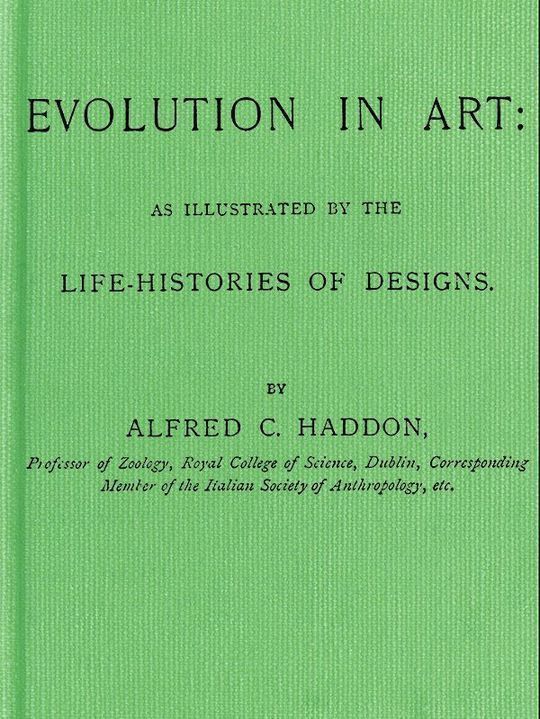
Evolution in Art As Illustrated by the Life-histories of Designs
Free
Description
Contents
Reviews
Language
English
ISBN
Unknown
EVOLUTION IN ART: AS ILLUSTRATED BY THE LIFE-HISTORIES OF DESIGNS.
PREFACE.
CONTENTS.
LIST OF ILLUSTRATIONS.
SOURCES OF THE ILLUSTRATIONS
INTRODUCTION.
DECORATIVE ART OF BRITISH NEW GUINEA.
I.—Torres Straits and Daudai.
II.—The Fly River.
III.—The Papuan Gulf.
Classification of Carved Patterns on Wooden Belts from the Gulf of Papua.
Classification of Carved Patterns on Wooden Belts from the Gulf of Papua.
IV.—The Central District.
V.—The Massim District.
VI.—Relation of the Decorative Art to the Ethnology of British New Guinea.
VII.—Note on the Scroll Designs of British New Guinea.
THE MATERIAL OF WHICH PATTERNS ARE MADE.
I.—The Decorative Transformation and Transference of Artificial Objects.
1. Transformation of a Solitary Object.
2. Transference of Fastenings.
3. Skeuomorphs of Textiles.
4. Skeuomorphic Pottery.
5. Stone Skeuomorphs of Wooden Buildings.
6. Skeuomorphic Inappropriateness.
1. Transformation of a Solitary Object.
2. Transference of Fastenings.
3. Skeuomorphs of Textiles.
4. Skeuomorphic Pottery.
5. Stone Skeuomorphs of Wooden Buildings.
6. Skeuomorphic Inappropriateness.
II.—The Decorative Transformation Of Natural Objects.
1. Physicomorphs.
2. Biomorphs.
3. Heteromorphs.
1. Physicomorphs.
2. Biomorphs.
3. Heteromorphs.
THE REASONS FOR WHICH OBJECTS ARE DECORATED.
I. Art.
II. Information or Communication.
III. Wealth.
IV. Magic and Religion.
1. Sympathetic Magic.
2. Totemism.
3. Religion.
4. Religious Symbolism.
1. Sympathetic Magic.
2. Totemism.
3. Religion.
4. Religious Symbolism.
THE SCIENTIFIC METHOD OF STUDYING DECORATIVE ART.
I. Application of Biological Deductions to Designs.
II. The Geographical Distribution of Animals and of Designs.
III. General Remarks on the Method of Study.
EXPLANATION OF THE PLATES.
INDEX.
FOOTNOTES:
The book hasn't received reviews yet.

